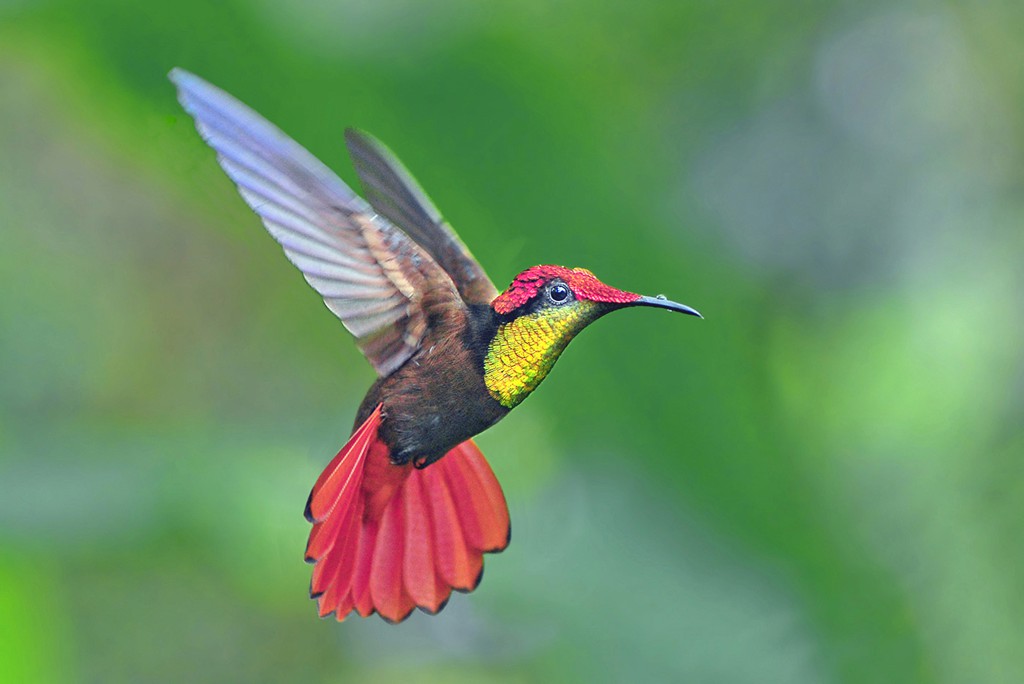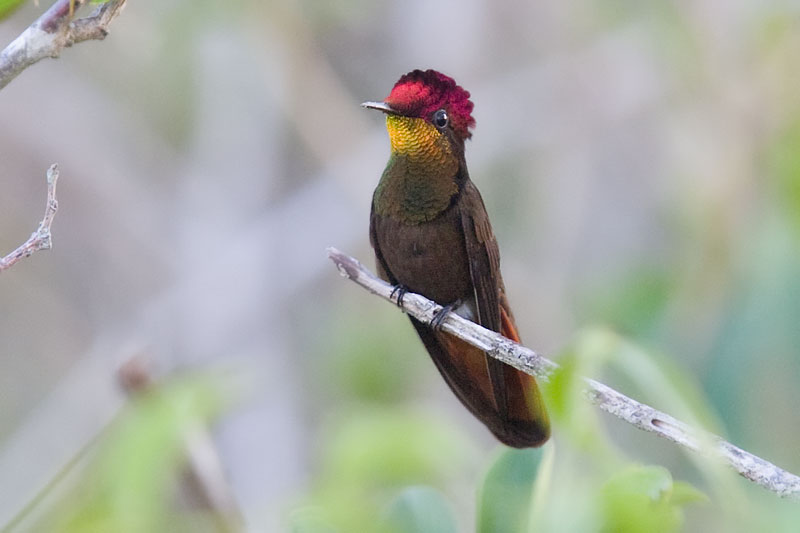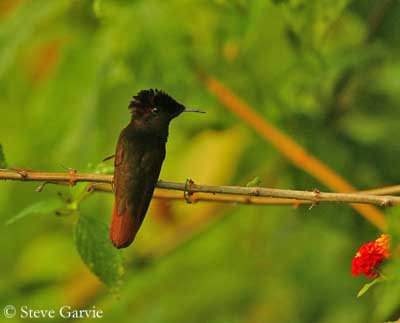
Chrysolampis mosquitus
SUBFAMILY
Trochilinae
TAXONOMY
Trochilus mosquitus Linnaeus, 1758, Surninam. Monotypic.
OTHER COMMON NAMES
English: Ruby-topaz hummingbird; French: Colibri rubistopaze;
German: Mosquitokolibri; Spanish: Colibrн Rubн;.
PHYSICAL CHARACTERISTICS
3.1–3.5 in (8–9 cm); female and male 0.14–0.18 oz (4–5 g).
Male has short straight black bill; crown and nape shining ruby
red, back dark brown glossed dull olive; throat and breast
metallic golden; rest of underparts brown; rectrices rich chestnut
tipped black. Female has copper-green back, below pale gray
(on Trinidad and Tobago, some birds have greenish golden
stripe from chin to breast); central tail feathers olive-green, the
others rufous-chestnut with shining purple-black subterminal
band, tipped white. Immature similar to adult female.
DISTRIBUTION
Eastern Panama and western north and central Colombia, east
through Venezuela to the Guianas, then south through northeast
and central Brazil to east Bolivia; also islands along north
coast from Aruba, Curaзao and Bonaire east to Trinidad and
Tobago.
HABITAT
Occurs in savanna-like vegetation from sea-level to shrubby
arid hillsides at 5,600 ft (1,700 m); forages from low down to
treetops in clearings, open country, parks, gardens, and plantations.
Most numerous below 1,640 ft (500 m).
BEHAVIOR
Migratory. Arrives in the southern Cauca Valley, Colombia, in
May and disappears in September; absent or rare on Trinidad
and Tobago in August until November; appears in Paranб,
Brazil, in October and leaves in April. Within Brazil northsouth
migration; along the coastal areas of the Guianas,
Venezuela, and Colombia presumably an east-west migration
with southward tendency towards Cauca and Magdalena Valleys,
Colombia.
FEEDING ECOLOGY AND DIET
Nectar of flowering shrubs, cultivated crops, cacti, small and
large trees. Tiny insects are caught in the air by hawking. Male
defends feeding territories in flowering shrubs or trees.
REPRODUCTIVE BIOLOGY
Breeds from December to June on Trinidad and Tobago,
Venezuela, Guianas; September to January in Brazil. Tiny cupshaped
nest of fine plant fiber and cobweb, outside decorated
with lichen and/or pieces of bark; built in fork of small branch,
3.3–13 ft (1–4 m) above ground, occasionally up to 26 ft (8 m).
Two eggs; incubation 15–16 days by female. Chicks black with
sparse brownish dorsal down; fledging in 19–22 days.
CONSERVATION STATUS
Common resident in the lowlands and coastal ranges.
SIGNIFICANCE TO HUMANS
None known.
Photo Gallery of - Ruby topaz




 Animalia Life
Animalia Life